Listening comes first
From selling phones in post-Soviet Russia to selling yachts on the French Riviera, Andrey Lomakin discusses the keys to good business in yachting…

We often get lost in the romanticism of yachting. For many, the intimacy we find in the sea is what draws us to the industry in the first place. But for Andrey Lomakin, Founder and CEO of West Nautical, it is a little more complicated than that. Lomakin is a bit of a maverick. He’s one of those rare people you meet who is annoyingly successful at everything they put their hand to and his business career is a testament to that accolade. With a background in mechanical engineering, specifically for aircraft and spacecraft design, Lomakin studied composite materials like GRP, which ultimately drove his passion for buying and selling composite yachts of the same material.
Speaking with SuperyachtNews in The Superyacht Group lounge at the Monaco Yacht Show this year, the Russian native discusses his unconventional route into yachting, from selling butter to boats, his passion for the sea, how the market is evolving to changes in customer demands and, ultimately, how to build a sustainable boating business. Now based in the EU after moving to Switzerland and opening a new office in Monaco, the entrepreneur has come a long way from his beginnings in the former Soviet Union, with his sights firmly set on the opportunities ahead.
“I grew up by a big lake in Russia, so I always had a connection to the water, even if it wasn’t the sea,” he explains. “But really my journey into this business started with a love for gadgets. I bought my first cell phone and my friends kept asking about it, so I thought, 'Why not sell these?' Then I bought a car and my friends were interested in that too, so I opened a dealership. Eventually, I got my first boat around 1998. I went to the showroom intending to get something really small, maybe 18 feet, then I quickly upgraded to a 19-footer and kept going.”
Russia back in 1991 was a very different nation from 1998, let alone compared to today. There were very few cars, no mobile phones and definitely no superyachts, says Lomakin. “The only things you could sell quickly were basics like butter and sausages, so that was actually my first business. For three or four years, I focused on sourcing and delivering those essentials because that’s what people needed most. It was business-based out of necessity. If you could find butter and get it into the shops, it would sell immediately. This was the time just after the fall of the Soviet Union and meeting people’s basic needs was the priority.”
In the early post-Soviet days, these gaps in goods and services weren’t necessarily problems, they were opportunities. Bad service wasn’t frustration for a young budding entrepreneur, but a chance to step in, improve the offering, build something sustainable and sell it. And as people’s needs evolved, the demand for communication grew and that’s when mobile phones became the focus for Lomakin’s next venture. Before long, more communication led to more business, which necessitated greater freedom of movement, sparking another lightbulb moment for the young businessman to open up his own Aston Martin and Lamborghini dealership. The market kept expanding and customer demands kept evolving.
“This is the story of post-Soviet Russia,” continues Lomakin. “As affluence in the new nation began to grow, so too did the appetite for business and then luxuries like cars and boats. Once people’s basic needs were met, they could focus on other things.”
Eventually, by 1998, people’s interests shifted and Lomakin, already a successful business owner in his own right, ordered his first yacht. On his first big trip in 2000, Lomakin sailed from the Greek islands through Istanbul and up to Moscow on a three-week journey he’s never forgotten. And like many boat owners, he soon outgrew his yacht and began searching for an upgrade, which in turn embarked him on a journey that would bring him to Monaco years later.
“I went to buy a boat in the Czech Republic, just one boat, but I ended up buying ten,” he laughs. “Then friends back home showed interest, so I brought those boats to a show and they sold out in just two days. That’s when I realised, I enjoyed this business. It’s fun, it’s a passion and it just grew from there. I went from an 18-footer all the way to 24 metres and kept going.”
As business flourished, Lomakin expanded into larger yachts, eventually leading AG Marine, and forming a new group with a long-standing business partner. Over the next 13 years, they built an impressive portfolio, representing more than 20 brands, including Sunseeker, Fairline, SeaRay, Riva, Cigarette and Regal. Leveraging Lomakin’s technical background, the company focused primarily on GRP yachts, with the 36-metre ISA model standing as their largest offering at the time.
In 2016, Lomakin became director and one of three owners of the Fairline shipyard in the UK, re-launching the boatbuilder, a move that marked another entrepreneurial shift from dealer to manufacturer as he restarted production of the iconic vessels. During Lomakin’s tenure, Fairline achieved three World Yacht Trophy awards at the Cannes Yacht Show, including prizes for best exterior, quality, and best new design, marking the shipyard’s first awards in its history.
“With an amazing team of engineers, naval architects, exterior and interior designers, we put together an incredible business producing some amazing yachts for our customers,” says Lomakin.
This wasn’t the CEO’s first venture into new-build projects, however. In 2012, Lomakin set out to build what he saw as one of the best yachts on the market, embarking on a project with Omega Architects: the Mulder 94 Voyager Firefly, completed with interior designer John Vickers. Firefly became a finalist for the best boat in the up-to-30-metre range award at the Cannes Yacht Show. Exhibited in Cannes and Monaco, Firefly was sold two months later and is currently available for charter with the brokerage.
“But my first client for a truly large yacht came along and I had no experience with yachts of that size. My partner and I had different visions – he was more interested in lake boats, whereas I saw the future in the sea and the Mediterranean for these larger builds,” recalls Lomakin.
With his sights set on the Mediterranean coast, Lomakin soon found himself tackling ambitious new projects. One of his first major clients sought a custom paint job for his yacht to match the precise metallic shade of his Aston Martin. The client even sent over the fuel tank and engine cover, to ensure the colour was exact. But metallic paint on a yacht doesn’t behave the same as on a car and once applied, it revealed a greenish tint in certain lighting.
Whilst Lomakin’s team suggested a pearl effect as a solution a month of heated negotiations ensued, with Lomakin balancing the client’s insistence on the car’s original colour against the shipyard’s practical constraints. In the end, the shipyard absorbed the €155,000 cost difference within the yacht’s €16.5 million budget to honour the request. The result was an Aston Martin-inspired yacht but also a realisation of Lomakin’s next step in the yachting business.
“After delivering that yacht, I realised yacht management was essential – handling finances, technical issues, the whole operation,” says Lomakin. “I went through my connections in the marine network and nice lady from the marine industry gave me a contact, Geoff [Moore, MD of West Nautical], and said he might be interested in management. So, I reached out and told him, ‘I’m a guy with big plans, come join me’. We met in Southampton and talked about our vision, teamwork and what we could build together. Paul [Hicks, Project Manager], who joined us around 2011 as our first manager, was also involved and he’s still with us today, an absolute powerhouse of knowledge.”
In September 2014, West Nautical was officially registered as a brokerage with a team of five people. Today, it's grown to 50. With offices in the UK, Dubai and Cyprus the company and fleet have kept growing. In terms of management, the team had focused on building a fleet of 12 to 16 yachts and being able to manage them comfortably, focusing on maintaining trust and reputation. About three years ago, however, the company surpassed 20 yachts under management and restructured to expand its capacity, now set up to handle up to 50 yachts, as well as extending its reach with its charter central agency and brokerage offerings with a comprehensive range of services across its expanding fleet.
As the company has evolved during Lomakin’s tenure, so too have the demands of owners and guests. He explains that when he first entered the industry, clients often looked for grandeur and extravagance what is colloquially known as ‘dictator chic’ by some. These are the yachts that are practically floating palaces, purely designed to make an impression. Today, Lomakin feels attitudes have shifted to almost the opposite. Many clients want something low profile and homely but still close to the sea. They want simplicity and connection to the water, not extravagance.
The West Nautical executive explains that if you look at the plethora of yachts presented at The Monaco Yacht Show this year, you will see an abundance of vessels with spacious, open designs, allowing people to be closer to the ocean. The trend isn’t about being flashy, it’s about creating spaces that are just a metre above the water, so clients feel that intimacy with the sea. “If you want a palace, stay in Paris or London. There are loads there,” jokes Lomakin. “When you are at sea, you want to feel its energy right up close. This shift in owners and guests searching for a genuine connection with the sea is one of the biggest changes in yachting today.”
For many, this is the future yachting is slowly transitioning towards, with more sustainable, practical options. Albeit take-off seems to be relatively slow in some areas, we are seeing ever-growing interest in options like solar panels, electric-hybrid propulsion and vessels that go to more remote areas, evolving into fully connected spaces with minimal direct impact on the ocean.
The older generation, the 'palace' builders in their 70s, may still invest in designs of grandeur, but the younger generation, the Gen Zs and Millennials, don’t want palatial yachts and instead are looking for something far more minimalist. “This shift is opening up new ways for us to connect with clients,” adds Lomakin. “That’s really the message we’re trying to send: we have options that fit this new vision of yachting – options designed for the next generation.”
Lomakin’s journey from selling mobile phones in post-Soviet Russia to trading yachts along the French Riviera is a testament to his entrepreneurial grit and strategic pragmatism, and that same resourcefulness has defined his approach to business today. For Lomakin, proper business strategy is rooted in smart, practical choices, doing things right, keeping operations lean and approaching growth with an open mind. His decision to base the West Nautical headquarters in Newcastle, rather than the more predictable choice of London or Monaco, may seem unconventional, but it blends both his opportunistic perseverance with a grounded financial strategy that obviously works.
“When we chose to base operations in Newcastle, the decision came down to financial strategy. My philosophy is simple: keep your running costs low and you’ll have a sustainable business,” he explains. “Setting up in London would mean hiring expensive people, and paying high overheads, and that doesn’t guarantee business success. Newcastle has a strong industrial heritage and it’s still home to knowledgeable, motivated people. Connection-wise, there are airports, great hotels and restaurants. Plus, the cost of living is lower, so we’re able to hire skilled people who can focus on delivering quality work without the extreme costs associated with London.”
“Monaco is always interesting for example,” he continues. “After the yacht show, I like to walk around, chat with people and stop by a few evening parties. It’s my hour-long evening walk when I’m here. It’s all part of the scene, but honestly, these events don’t necessarily lead to real results. There’s a lot of time, effort and money spent on networking, gathering business cards and meeting brokers, assistants and crew, but it doesn’t always translate into actual business.”
In the end, the most reliable way to grow a business isn’t through flashy marketing or constant rebranding but through making sure your existing clients are truly happy. A satisfied client is worth more than any advertising. They come back and they bring friends. Marketing and appearances are important, of course, but they’re just the introduction. The real work is in focusing on client satisfaction. Each client has distinct needs and understanding those little details is what sets you apart.
“I have one client, for instance, who always asks to see the wardrobe space first,” says Lomakin. “He wants room for a full month’s wardrobe, from formal dinner attire with his wife to casual clothes for jet skiing. Then there’s another, a history enthusiast, who was completely taken by a table we sourced from an antique shop. He spent several minutes just admiring it and for him, that piece became the focal point of the room. And then there’s the practical-minded captain, always thinking about his comfort. His first question? ‘Where do I put my coffee cup and is there a radio within reach?’”
These specific requests may seem small, trivial even. But they’re everything to the clients who make them. Recognising and meeting these personal preferences builds a level of satisfaction that’s hard to match and this has been Lomakin’s key to building a sustainable career. While each project may seem similar at a glance, it’s the ability to fulfil these individual needs with care that makes all the difference. Growing a business isn’t just about the product, but rather about making each client feel understood and valued. That’s the kind of loyalty no amount of advertising can buy and it’s what keeps clients coming back.
“When interviewing new brokers, I always ask, ‘When you meet a client, what’s your approach?’ Many will say, ‘I introduce myself, present the product, crack a joke, etc’ and then, eventually, “I listen to the client”. But the truth is, listening should come first,” says Lomakin. “If someone approaches you, they want to be heard. They don’t necessarily need a full sales pitch right off the bat. They want someone to understand what they’re looking for. If you genuinely listen to them from the beginning, you have a good chance of winning them over. If not, they’ll move on. Listening to customer demands – that’s the reality of what it takes to be successful in business.”
Profile links
NEW: Sign up for SuperyachtNewsweek!
Get the latest weekly news, in-depth reports, intelligence, and strategic insights, delivered directly from The Superyacht Group's editors and market analysts.
Stay at the forefront of the superyacht industry with SuperyachtNewsweek
Click here to become part of The Superyacht Group community, and join us in our mission to make this industry accessible to all, and prosperous for the long-term. We are offering access to the superyacht industry’s most comprehensive and longstanding archive of business-critical information, as well as a comprehensive, real-time superyacht fleet database, for just £10 per month, because we are One Industry with One Mission. Sign up here.
Related news
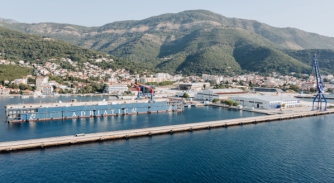
Adriatic 42 appoints Eric Robert-Peillard as CEO
The Montenegrin shipyard has made another key leadership change following the former CEO's departure earlier this year
Business
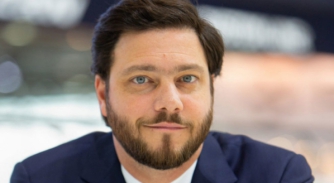
Stefano de Vivo steps down from Ferretti
The Group’s CCO is set to leave Ferretti after a decade of growth, transitioning to a CEO role, whilst maintaining a consultancy role within the firm
Business
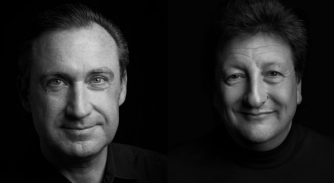
Ocean Independence restructures leadership team
The Küsnacht-based brokerage has appointed André Mahr as COO and promoted Toby Maclaurin to CCO as the firm moves to foster further growth
Business

What do CEOs think?
Chairman Martin H. Redmayne invites business leaders to take part in The Superyacht CEO Sentiment Survey 2024
Business
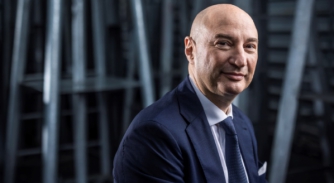
Sanlorenzo appoints Ferruccio Rossi and confirms Q1 financials
After his resignation last month, Ferruccio Rossi has been appointed CEO of the newly established Sanlorenzo Monaco Group
Business
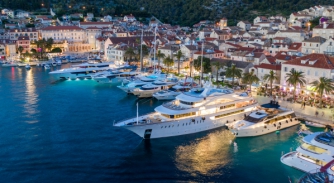
Evolution of the new-build brokers
Today brokers must do more than bring cash to the table and then sign off, with clients now considered long-term assets rather than a one-time source of income
Business
Related news
Stefano de Vivo steps down from Ferretti
1 year ago
What do CEOs think?
2 years ago
Evolution of the new-build brokers
2 years ago
Heesen appoints new CEO
2 years ago
NEW: Sign up for
SuperyachtNewsweek!
Get the latest weekly news, in-depth reports, intelligence, and strategic insights, delivered directly from The Superyacht Group's editors and market analysts.
Stay at the forefront of the superyacht industry with SuperyachtNewsweek



